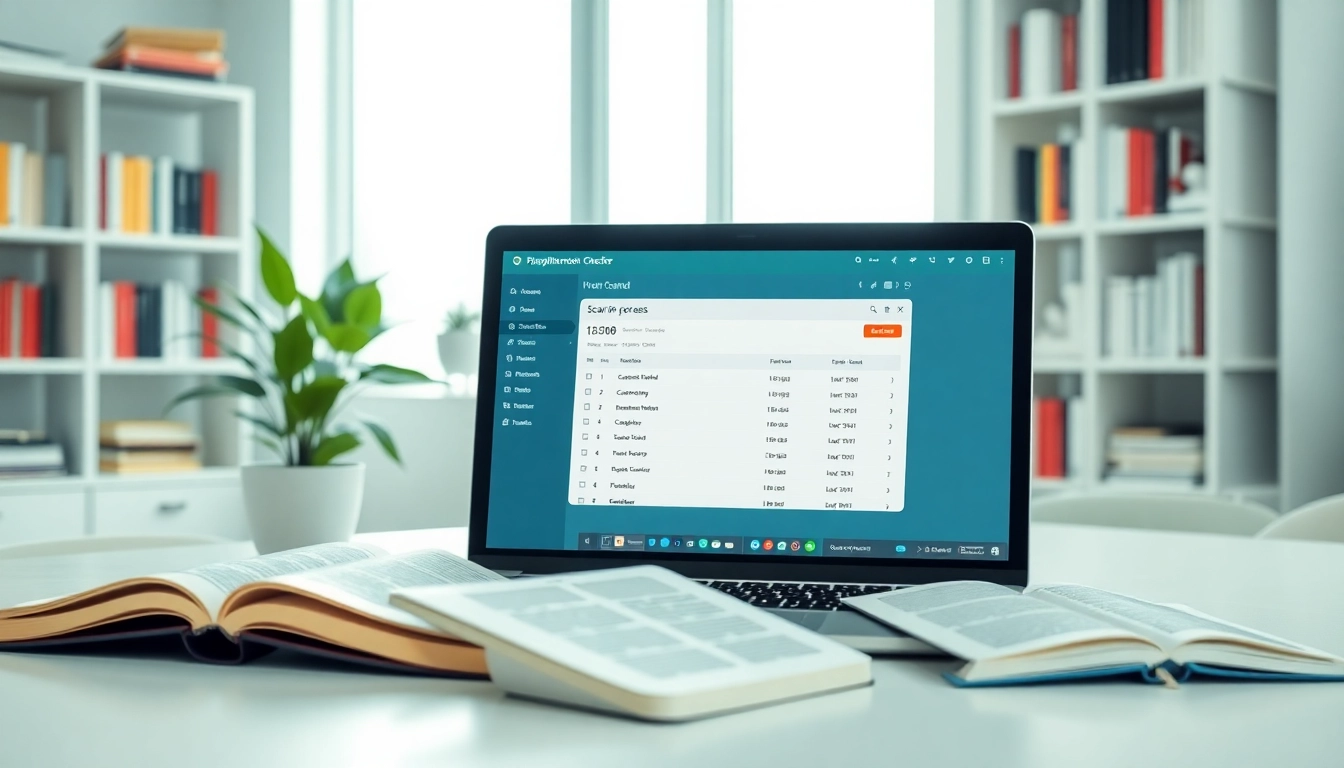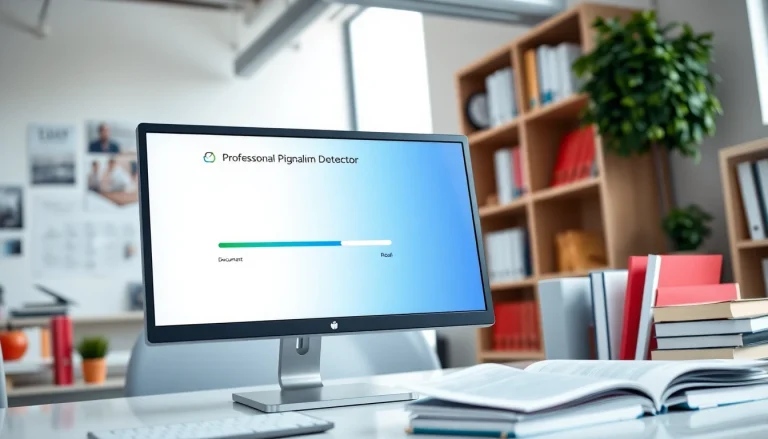The Importance of Using a Plagiarism Checker
In today’s digital era, the concept of originality is paramount. Academic institutions, content creators, researchers, and professionals across various fields are increasingly recognizing the need to produce authentic work. This trend has given rise to the necessity of using a plagiarism checker, a powerful tool that ensures the uniqueness of written content and helps maintain credibility. Understanding the importance of plagiarism detection is vital to safeguarding your work and upholding academic integrity.
Understanding Plagiarism and Its Consequences
Plagiarism is the act of using someone else’s work or ideas without proper attribution, presenting them as your own. This unethical practice can occur in various forms, from copying text verbatim to paraphrasing ideas without crediting the original author. The consequences of plagiarism can be severe, ranging from loss of reputation and academic penalties to legal repercussions. As institutions tighten their policies around academic dishonesty, individuals must navigate these waters carefully to protect their scholarly and professional futures.
Benefits of Maintaining Academic Integrity
Maintaining academic integrity is essential for building trust, credibility, and respect in the academic community. The benefits of upholding these standards extend beyond avoiding repercussions; they contribute to personal and professional growth. By ensuring that your work is original, you foster a sense of pride in your accomplishments, enhance your critical thinking skills, and encourage deeper engagement with your subject matter. Furthermore, with the rise of online learning and the accessibility of information, being mindful of academic integrity is more critical than ever, as it lays the foundation for scholarly ethical behavior.
How a Plagiarism Checker Enhances Writing Quality
Using a plagiarism checker does not merely highlight instances of copied content but also enhances the overall quality of writing. By scanning your work for similarities with existing sources, these tools provide an opportunity to rework phrases, restructure arguments, and refine citations. Unlike traditional editing methods, plagiarism detection tools offer a comprehensive analysis of your text, allowing you to create more coherent and well-referenced content. This process not only ensures the authenticity of your work but also significantly improves the clarity and effectiveness of your writing.
Key Features to Look for in a Plagiarism Checker
Accuracy: Why It Matters
An effective plagiarism checker must prioritize accuracy in detecting similarities with existing content. Tools that provide a high detection rate help users understand the originality of their work better. You should look for software that employs advanced algorithms and large databases to ensure a comprehensive evaluation. Detailed reports outlining specific instances of plagiarism are crucial, as they allow users to see relevant sources and assess the extent of the similarity.
User-Friendly Interface for Easier Navigation
A user-friendly interface is vital for maximizing the effectiveness of a plagiarism checker. The experience of navigating the software should be seamless, allowing users to upload documents and receive results without hassle. Clear design ensures that even individuals with minimal tech-savvy can utilize the tool, fostering greater engagement and encouraging more frequent checks on various documents. Thus, an intuitive platform not only enhances the user experience but also promotes the tool’s regular use.
File Format Compatibility for Different Document Types
Different disciplines and formats require compatibility with various document types, and an effective plagiarism checker should accommodate this need. Whether it’s a Word document, PDF, or plain text file, the ability to process multiple formats ensures that users from all backgrounds can benefit from the service. This flexibility supports users in checking a variety of academic papers, essays, articles, and reports without being limited by format constraints.
How to Choose the Right Plagiarism Checker
Assessing Your Needs Based on Use Case
Choosing the right plagiarism checker should begin with a clear understanding of your specific needs. Academic institutions may prioritize compliance with their specific requirements, while content creators might focus on protecting intellectual property. Consider factors such as the frequency of checking, the volume of content to be evaluated, and the types of documents you typically produce. By aligning the features of a plagiarism checker with your particular use case, you can make an informed decision that caters to your requirements.
Comparing Free and Paid Plagiarism Checker Options
There is a wide range of plagiarism checkers available today, some of which are free while others require a subscription or one-time payment. Free tools can be tempting, but they often come with limitations, including reduced accuracy, fewer features, and a smaller database. Conversely, paid options typically offer enhanced functionality, such as more comprehensive reports and better customer support. It’s crucial to analyze what features you need and determine if investing in a paid service is justified for your specific situation.
Reading User Reviews and Testimonials
Before committing to a specific plagiarism checker, exploring user reviews and testimonials can provide valuable insight into its efficacy and reliability. Feedback from other users can highlight strengths and weaknesses that are not immediately apparent from the tool’s promotional material. By assessing user experiences, you can gauge which tools deliver reliable results, ease of use, and valuable support, enabling you to make a more informed choice.
Best Practices for Using a Plagiarism Checker
Regular Checks for Academic Papers and Research
One of the best practices for utilizing a plagiarism checker is to perform regular checks on your academic papers and research. By frequently running your work through a plagiarism checker, you can catch issues early and make necessary adjustments to maintain originality. This proactive approach prevents potential academic misconduct and fosters best practices in research and writing throughout your academic career.
Incorporating Results to Improve Writing Skills
Using a plagiarism checker should not be a one-time event. Instead, analyze the results thoroughly and use them as a learning tool to improve your writing skills. If a significant portion of your work is flagged as similar to existing content, consider revisiting your writing process. This could involve learning proper paraphrasing techniques, improving your note-taking strategies during research, or enhancing your understanding of citation rules. Incorporating these results into your writing routine can foster better habits and a greater command of original expression.
Staying Updated with Citation Rules
Staying informed about current citation rules and standards is essential in reducing the risk of plagiarism. As methodologies evolve and new citation styles emerge, writers must adapt to these changes. Engaging with professional development resources, workshops, or online courses can provide valuable updates and refreshers on proper citation practices. Awareness of these guidelines will empower you to cite sources accurately and maintain the integrity of your work.
Future Trends in Plagiarism Checkers
The Role of AI in Enhancing Detection Capabilities
Artificial intelligence is revolutionizing many aspects of technology, including plagiarism detection. Future plagiarism checkers are expected to leverage AI capabilities to enhance their detection capabilities. These advancements allow tools to recognize nuanced variations of text similarity, increasing accuracy beyond mere verbatim matches. AI can also analyze writing styles and help identify potential paraphrasing that may escape traditional algorithms, ensuring a more thorough evaluation of content originality.
Emerging Features for Enhanced User Experience
As the demand for plagiarism checking grows, developers are introducing innovative features to enhance user experience continuously. Expect to see functionalities such as real-time feedback on writing, integration with word processors for seamless editing, and multi-language support for a broader audience. Emphasis on user experience will lead to checkers that retain critical features while simplifying the checking process, making it more intuitive and efficient.
Integrating Plagiarism Checkers with Writing Software
The future of plagiarism checkers lies in integration with writing software. By seamlessly embedding plagiarism detection tools in word processing applications, users can check their work for originality without leaving their writing environment. This integration streamlines the writing and editing process, enabling writers to maintain focus and productivity while ensuring their work adheres to academic integrity standards. The continuous evolution of technology promises to enhance this integration, making the proposal for plagiarism checking within writing tools an essential feature for users.








